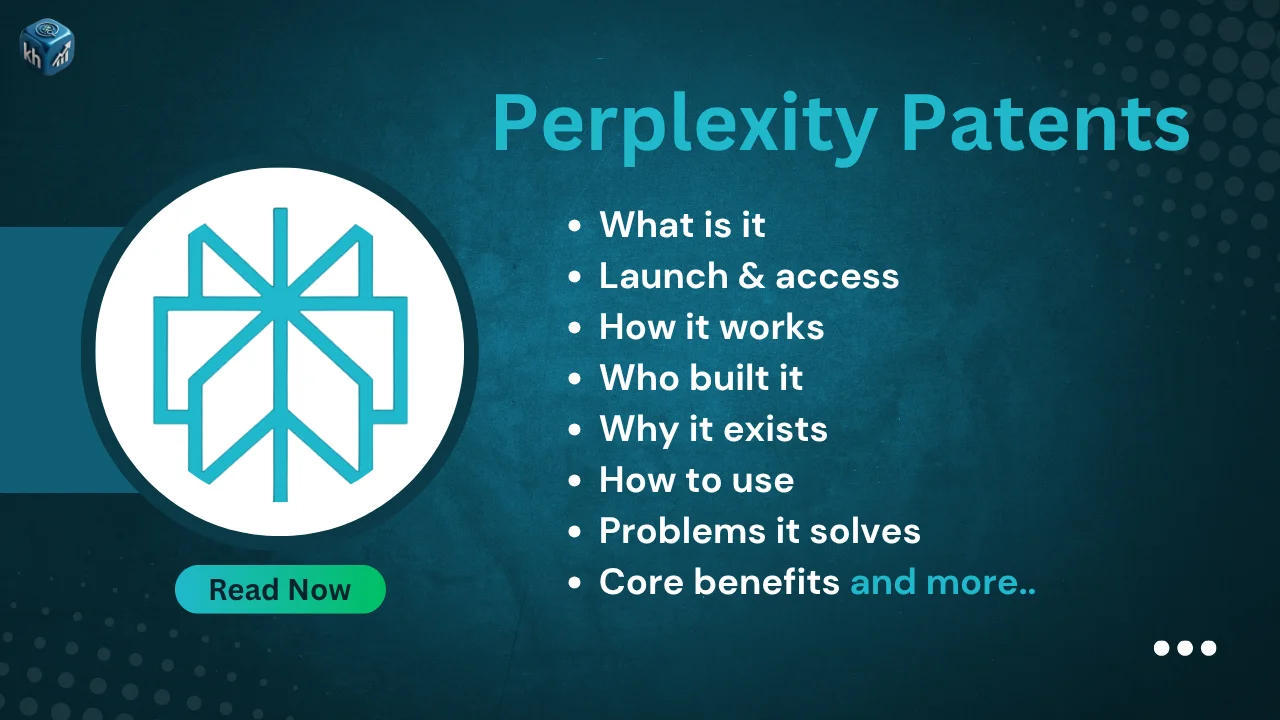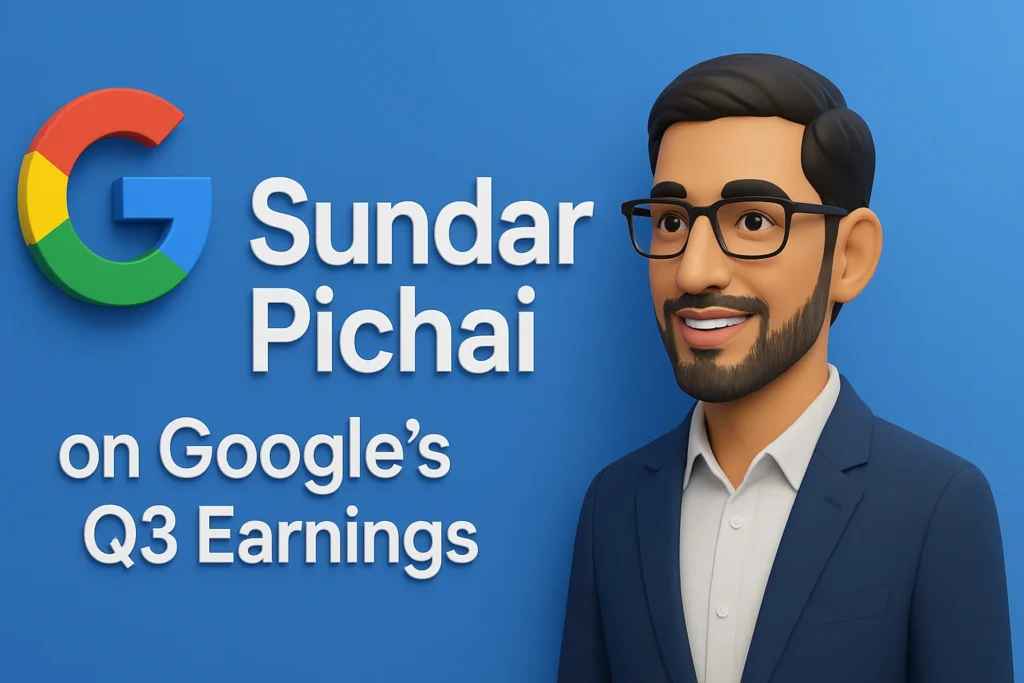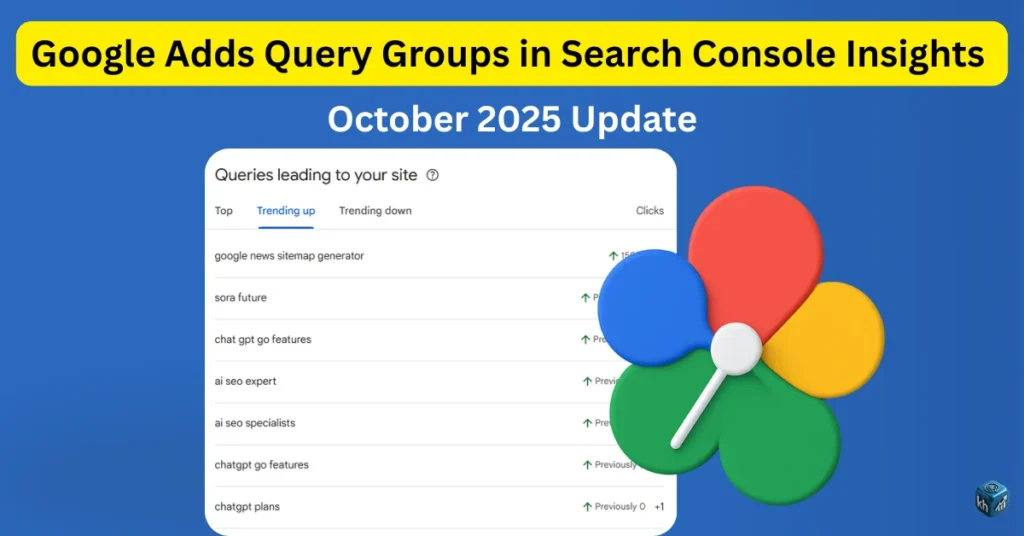Perplexity Patents: AI-Powered Patent Research for Everyone (Free Beta)

Perplexity Patents is a beta AI patent research agent from Perplexity AI that lets anyone ask natural-language questions to uncover relevant patents with citation-first answers, inline patent viewing, and conversational context, available worldwide and free during beta with higher quotas for Pro and Max subscribers. It tackles rigid keyword syntax, limited public tools, and expensive pro platforms by using an agentic research system over a special patent knowledge index on Perplexity’s large-scale infrastructure, expanding to papers and code when useful and linking directly to authoritative documents for verification.
What is it
Perplexity calls it “the world’s first AI patent research agent” designed to make IP intelligence accessible through conversational search rather than complex query syntax, returning organized patent collections, clear answers, and linked sources inline for verification. It keeps conversational context so follow-up questions refine, compare, or expand research without rebuilding the query, and it suggests relevant next topics to guide exploration.
Launch and access
Perplexity announced Perplexity Patents on October 29, 2025, and made it available globally as a free beta on launch day, with Pro and Max subscribers receiving higher usage quotas and additional model configuration options during beta. Users access it directly within Perplexity by asking patent-oriented questions in plain English—no special onboarding or separate interface is required beyond the standard product experience.
Who built it
Perplexity Patents is developed and provided by Perplexity AI, Inc., within the Perplexity Engine ecosystem and governed by Perplexity’s platform-wide Terms of Service that cover its websites, apps, and features. The blog and legal pages are the official sources describing capabilities, availability, and policy terms for this feature.
Why it exists
Perplexity frames the problem: patent search has relied on exact keywords and arcane syntax, public tools are limited, and professional platforms are costly and require significant training—keeping most people on the sidelines and slowing access to verified prior art. Perplexity Patents aims to remove those barriers so anyone can get clear, cited answers at the pace of their innovation, reducing friction between curiosity and authoritative knowledge.
Core benefits
- Natural language search replaces complex Boolean and classification strings while returning cited answers and relevant patent collections when useful.
- Conversational context supports iterative deep-dives, comparisons, and adjacent exploration with suggested follow-ups to illuminate new directions.
- Semantic discovery surfaces related inventions beyond exact terms (e.g., “fitness trackers” also yields activity bands, step-counting watches, and health monitoring wearables).
- Inline verification provides an embedded patent viewer and direct links to original documents, aligning with Perplexity’s citation-first design.
Problems it solves
- Eliminates the steep learning curve of rigid keyword syntax and specialized query languages by translating natural language into targeted retrieval.
- Reduces missed prior art caused by exact-match limitations, supporting scoping, diligence, and early FTO triage with broader, semantically aligned results.
- Lowers cost and complexity by offering a free beta experience and embedding expert-grade verification flows in a single interface.
- Shortens research cycles by integrating answers, citations, inline viewing, and links, reducing context-switching and rework.
How it works
- An agentic research system decomposes complex patent questions into concrete retrieval tasks executed against a special patent knowledge index on Perplexity’s exabyte-scale search infrastructure.
- The agent iteratively guides follow-up retrieval and composes answers with dozens to hundreds of supporting documents where appropriate, all linked for verification.
- When helpful, it expands beyond patent literature to academic papers, public software repositories, and other sources where new ideas appear first, to reveal context and adjacent prior art.
Technologies involved
Perplexity describes the backend as a state-of-the-art agentic research system operating over a specialized patent knowledge index hosted on large-scale search infrastructure, enabling semantic retrieval and authoritative, citation-first answer generation with inline validation. This design is consistent with Perplexity’s overall product philosophy of grounding outputs in verifiable sources.
Who it’s for
- Engineers and R&D teams exploring prior art around emerging technologies without needing formal patent-search training.
- Patent practitioners who want broader semantic coverage and streamlined verification to complement expert workflows.
- Business leaders and product strategists who need fast, source-backed views of competitive landscapes and key inventions.
- Curious learners who want trustworthy, cited answers about technologies and their patent footprints.
How to use
- Ask a plain-language patent question such as “Are there any patents on AI for language learning?” or “Key quantum computing patents since 2024?” to start.
- Review returned patent collections, open the inline viewer to examine claims and figures, and follow direct links to originals for audit-friendly citation capture.
- Use follow-up questions to refine or compare inventions; explore suggested topics to surface adjacent prior art and deepen analysis.
- During beta, usage is free; Pro and Max receive higher quotas and additional model configuration options to tailor workflows.
Time savings and workflow impact
By eliminating rigid syntax and capturing semantically related inventions, Perplexity Patents compresses iterative search cycles that commonly waste time in early-stage scoping and diligence. Embedded viewing and direct authoritative links reduce tool-hopping and accelerate movement from inquiry to verifiable evidence and decision-making, with suggested follow-ups guiding efficient exploration paths.
Scope, terms, and boundaries
Perplexity Patents extends beyond conventional patent databases when useful, but its core value remains citation-first answers with authoritative document access for traceability and professional-grade verification. It is a beta product, so capabilities, quotas, and options (including Pro and Max benefits) may evolve; platform usage is governed by Perplexity’s Terms of Service for the Perplexity Engine and its features. Users should rely on inline viewers and original links for formal use of claims and figures.
Pricing and quotas (beta)
Perplexity Patents is free during beta for all users, while Pro and Max subscribers receive higher usage quotas and additional model configuration options, and Perplexity’s terms govern subscription changes and service adjustments across the platform.
Trust, citations, compliance
Perplexity emphasizes citation-first answers with inline access to original patent documents to support auditability and reliable professional use. Platform terms set expectations around proper attribution, lawful usage, and handling of AI-generated outputs across Perplexity’s services, including this feature.
Quick-start checklist
- Ask a natural-language patent question directly in Perplexity to initiate research.
- Inspect returned patents, open inline viewers, and follow authoritative links for verification.
- Iterate with follow-ups and use suggested topics to branch into adjacent prior art.
- If subscribed, leverage Pro/Max quotas and additional model configuration to scale workflows during beta.
- Consult Perplexity’s Terms for platform-wide service and usage policies as needed.
Visual quick-compare
Each cell summarizes Perplexity’s official descriptions of typical limitations and the new capabilities introduced in Perplexity Patents, grounded in its launch post and platform materials.
Reader-friendly “flow map” of usage
- Start: Ask a plain-language patent question to initiate the research agent.
- Retrieve: Agent hits the special patent knowledge index and composes a structured result set.
- Verify: Use inline viewer and direct links to authoritative documents to inspect claims/figures.
- Iterate: Ask follow-ups, compare inventions, and pursue suggested adjacent topics without rebuilding.
- Expand: When helpful, browse related academic papers or public repositories surfaced alongside patents.
- Decide: Use cited results to scope prior art, understand landscapes, and inform strategy, with terms governed by the platform’s ToS.
If you want, the next step can include designing a chart-based workflow guide and a visual prompt library tailored for engineers, practitioners, and strategists—still sourced strictly from Perplexity’s official blog and legal pages—to embed directly into your website or plugin docs for SEO-rich, scannable UX components.
FAQ
Perplexity Patents is a conversational, citation-first AI patent research agent that answers natural‑language questions, returns relevant patent collections, and lets you view originals inline with direct links.
Yes. It’s available worldwide in free beta, with higher usage quotas and additional model configuration options for Pro and Max subscribers.
Simply ask a patent‑oriented question in plain English, review the returned patent set, open the inline viewer for details, and follow links to the original documents; ask follow‑ups to refine or compare without rebuilding queries.
It removes rigid keyword syntax and specialized query requirements, improves discovery via semantic understanding across different terms, and speeds verification with inline viewing and authoritative links.
When helpful, it expands beyond patent literature to include related knowledge like academic papers and public code repositories, while keeping a citation‑first, verifiable workflow.
Author
Harshit Kumar is an AI SEO Specialist who helps businesses grow with data-driven strategies and automation tools. He focuses on combining human creativity with AI precision to improve organic visibility.


Leave a Reply